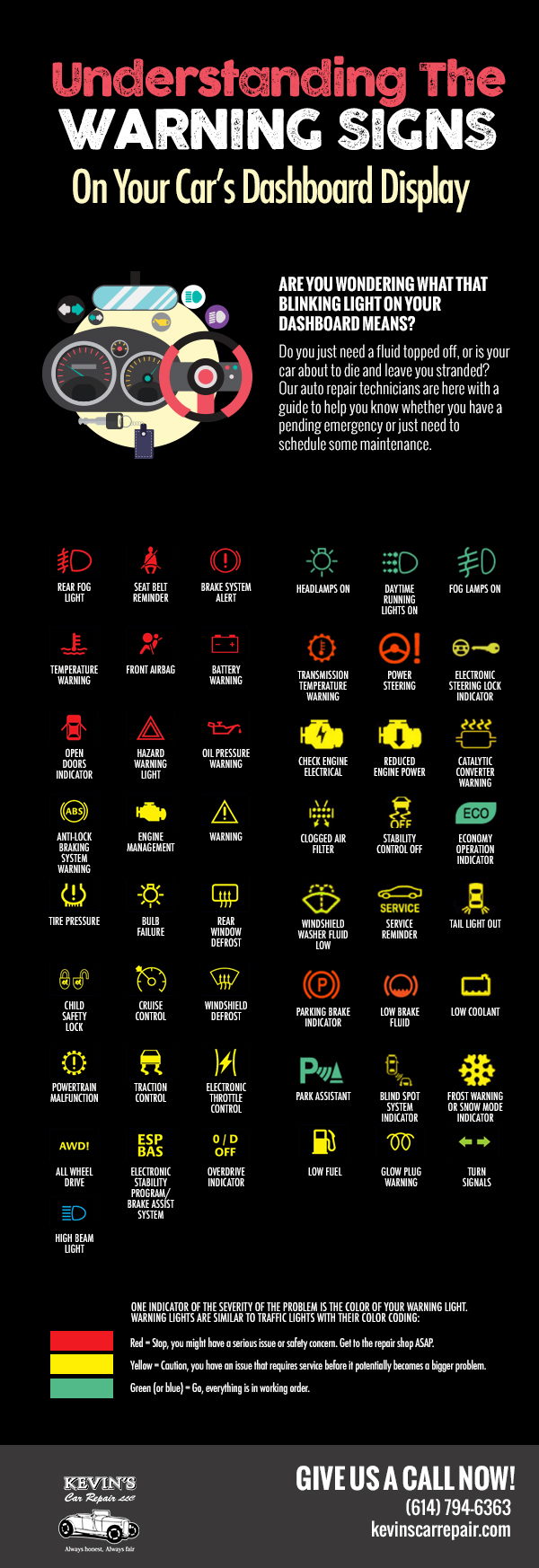Decoding The Importance Of Your Car'S Warning Indicators
Decoding The Importance Of Your Car'S Warning Indicators
Blog Article
Article By-Justesen Heath
When you lag the wheel, those radiant warning lights on your control panel can be a little bit bewildering. Do you understand what they're attempting to inform you about your cars and truck's health? Comprehending the relevance of these lights is essential for your safety and the longevity of your car. So, the following time one of those lights appears, would not you intend to decipher its message accurately and take the required steps to address it?
Common Caution Lighting and Interpretations
Recognize usual warning lights in your vehicle and recognize their meanings to ensure risk-free driving.
The most regular caution lights consist of the check engine light, which indicates concerns with the engine or exhausts system. If this light begins, it's important to have your lorry examined without delay.
The oil stress alerting light shows reduced oil stress, needing prompt interest to stop engine damages.
A flashing battery light could suggest a damaged billing system, potentially leaving you stranded otherwise dealt with.
The tire stress monitoring system (TPMS) light signals you to low tire pressure, affecting vehicle stability and gas efficiency. Neglecting this could bring about harmful driving problems.
The abdominal light shows a trouble with the anti-lock stopping system, endangering your capability to quit promptly in emergencies.
Lastly, the coolant temperature level alerting light warns of engine getting too hot, which can lead to extreme damage otherwise resolved promptly.
Comprehending these common caution lights will help you address concerns without delay and preserve risk-free driving conditions.
Significance of Prompt Interest
Understanding the common caution lights in your cars and truck is only the primary step; the value of immediately dealing with these warnings can not be emphasized enough to guarantee your safety and security when traveling.
When a warning light brightens on your dashboard, it's your car's way of communicating a prospective concern that needs focus. Neglecting these warnings can result in much more extreme troubles later on, endangering your safety and potentially costing you extra out of commission.
Recommended Website to advising lights can prevent malfunctions and accidents. As an example, a blinking check engine light might show a misfire that, if left neglected, might cause damages to the catalytic converter. Addressing this promptly can save you from a pricey repair work.
Likewise, a brake system advising light could indicate low brake liquid or worn brake pads, important components for your safety when driving.
Do It Yourself Troubleshooting Tips
If you notice a warning light on your control panel, there are a few do it yourself fixing pointers you can attempt prior to seeking expert assistance.
The primary step is to consult your car's guidebook to understand what the certain warning light suggests. Often the problem can be as basic as a loosened gas cap triggering the check engine light. Tightening the gas cap might settle the problem.
Another usual issue is a low battery, which can set off various alerting lights. Examining the battery links for corrosion and guaranteeing they're safe and secure could deal with the trouble.
If a warning light continues, you can attempt resetting it by separating the auto's battery for a few mins and afterwards reconnecting it. Furthermore, checking your vehicle's fluid degrees, such as oil, coolant, and brake liquid, can help repair alerting lights associated with these systems.
Final thought
Finally, recognizing your automobile's caution lights is vital for keeping your automobile running efficiently and safely. By quickly resolving these signals and recognizing what they suggest, you can prevent costly repair services and possible failures.
Keep in average cost to repair car ac to consult your car's manual for specific information on each alerting light and do something about it accordingly to ensure a hassle-free driving experience.
Stay informed, stay risk-free when driving!
